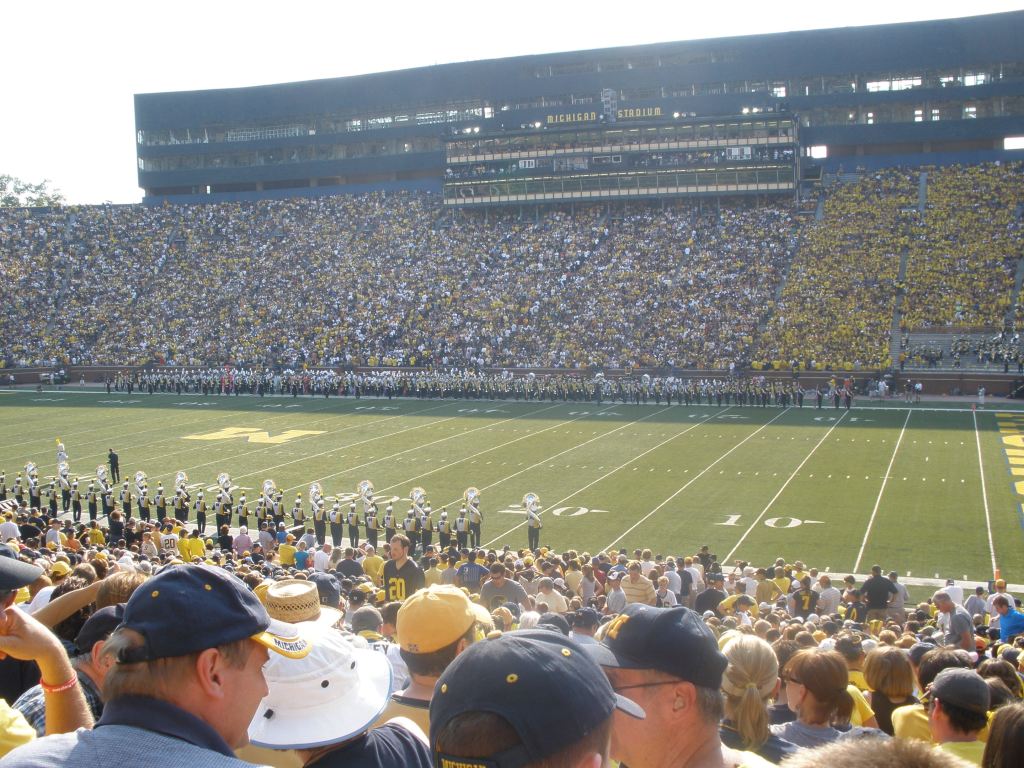
College football is in full swing and the fans, the bands, the cheerleaders, and the mascots are back. After a weird season with partial capacity stadiums or completely empty here in Michigan last year, now it’s fun to see that some things are getting back to normal. Here in Michigan, we have five division one college football teams: University of Michigan, Michigan State University, Western Michigan University, and Eastern Michigan University. I have been to games in four out of the five stadiums. Maybe one day I will make it to Rynearson Stadium with the concrete-themed field to see my Western Michigan Broncos play the Eastern Michigan Eagles. Join me as I look back at many great memories in theses stadiums.

I will start with the stadium I know best; I have been to 25 games at Waldo Stadium in Kalamazoo, home to the Western Michigan Broncos since 1939. Waldo Stadium is named after Western Michigan’s first president, Dwight Waldo. Built on the side of a hill, Waldo Stadium holds 30,200 fans. As a student, I got in for “free” (included in my tuition) and I got good seats; I typically got to the games early and I was able to sit at the 50-yard line, sandwiched between the Western Michigan sideline and the Bronco Marching Band. I got up-and-personal with all the action. Fun fact: the suites in the stadium; double as the football coaches’ offices during the week. I have many great memories of games at Waldo Stadium. One of my favorite memories was when the Western Michigan campus Hosted ESPN’s College GameDay during the magical 2016 season, Row the Boat! The excitement of November 19, 2016, started early before sunrise. I got to the center of campus about 6:30 AM and there was already a crowd gathered in the cold with their customary GameDay signs. Yes, there was someone with a Washington State flag. It was already an electric environment at 6:30 AM. In typical Michigan fashion, it was snowing all morning. That’s not surprising for late November, but it was 75 degrees Fahrenheit just 48 hours before. Welcome to Michigan. Western Michigan got College GameDay because we were ranked number 15 - and we were 10-0 with wins on the road against Illinois and Northwestern (Michigan State lost to both of these teams that year). It also helped that it was the week before rivalry week, when SEC teams unnecessarily play FCS schools with only one game left in the season after that. In front of a capacity crowd at Waldo Stadium, Western Michigan beat Buffalo 38 to 0 and Western Michigan improved to 11-0.
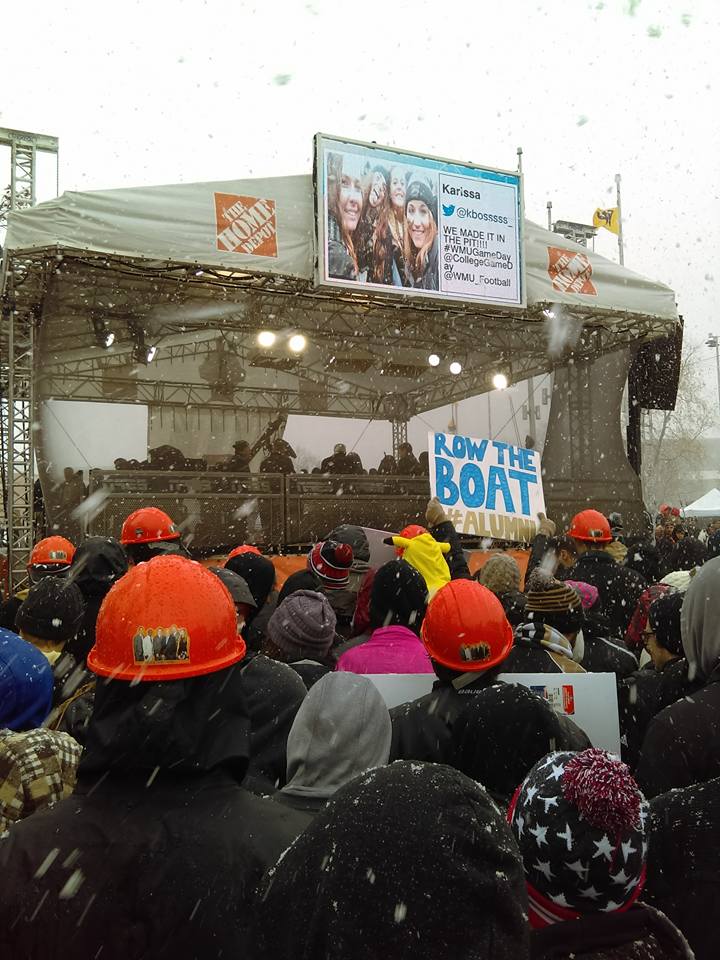
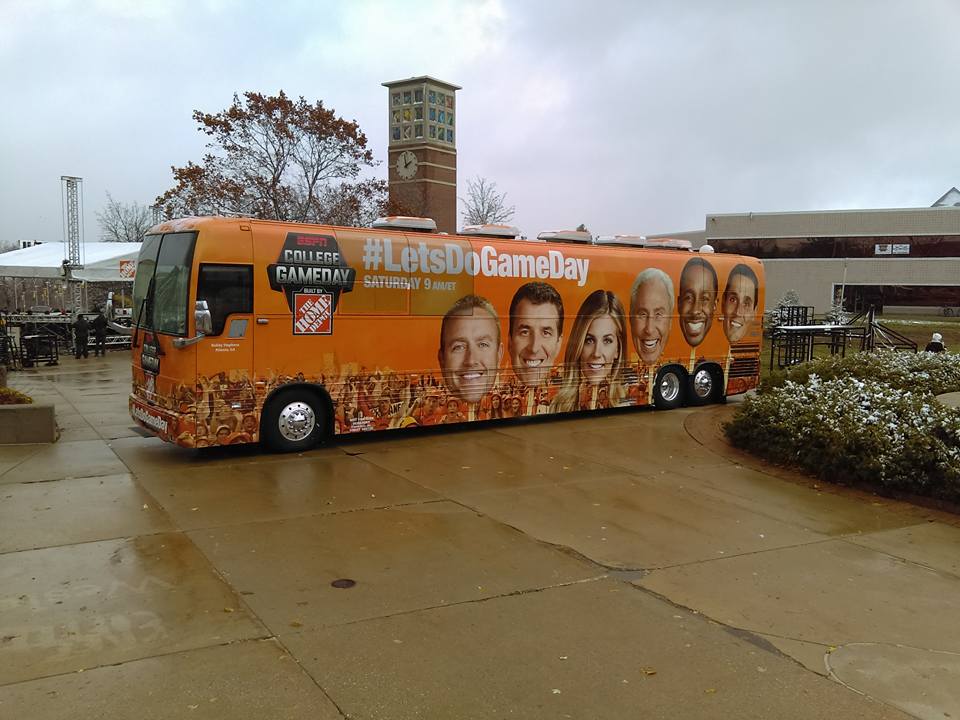
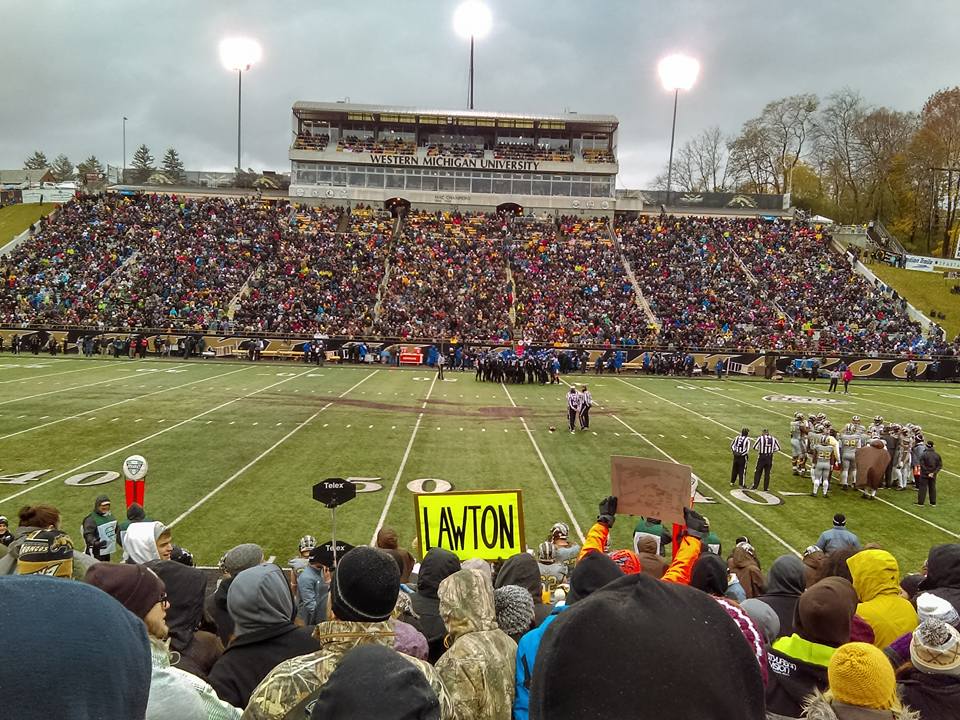
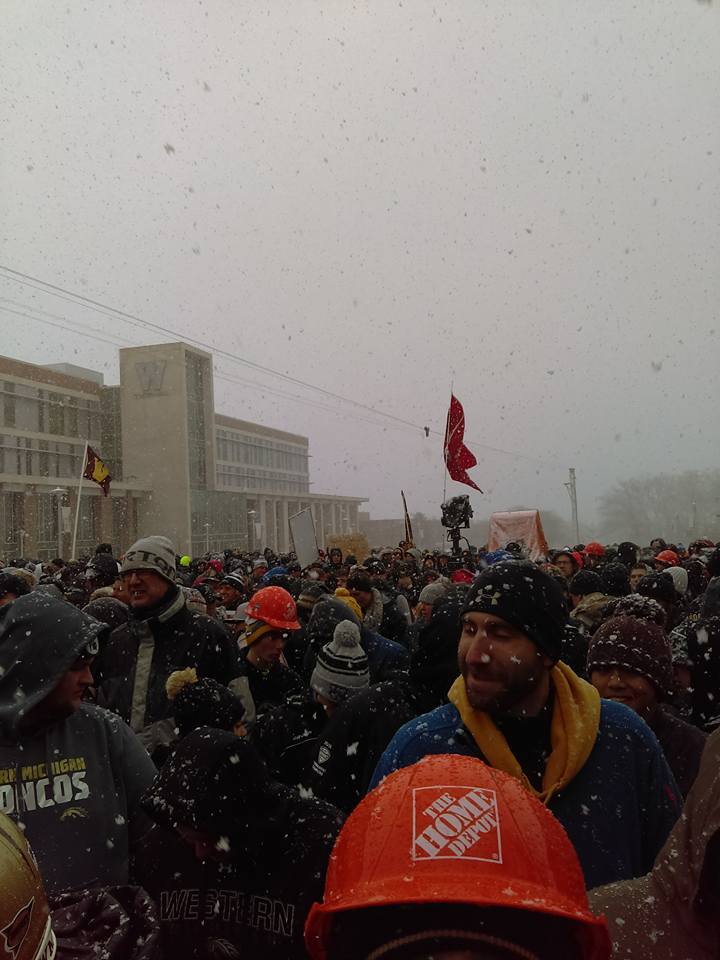
Next stadium on the list is Central Michigan University’s Kelly/ Shorts Stadium, Central is Western Michigan’s main rival. I have been to the Western Michigan- Central Michigan rivalry in Mount Pleasant three times. The rivalry atmosphere is a lot of fun between Western and Central. Kelly / Short Stadium is similar in size to Waldo Stadium, holding 30,255 people, home to the Chippewas since 1972.
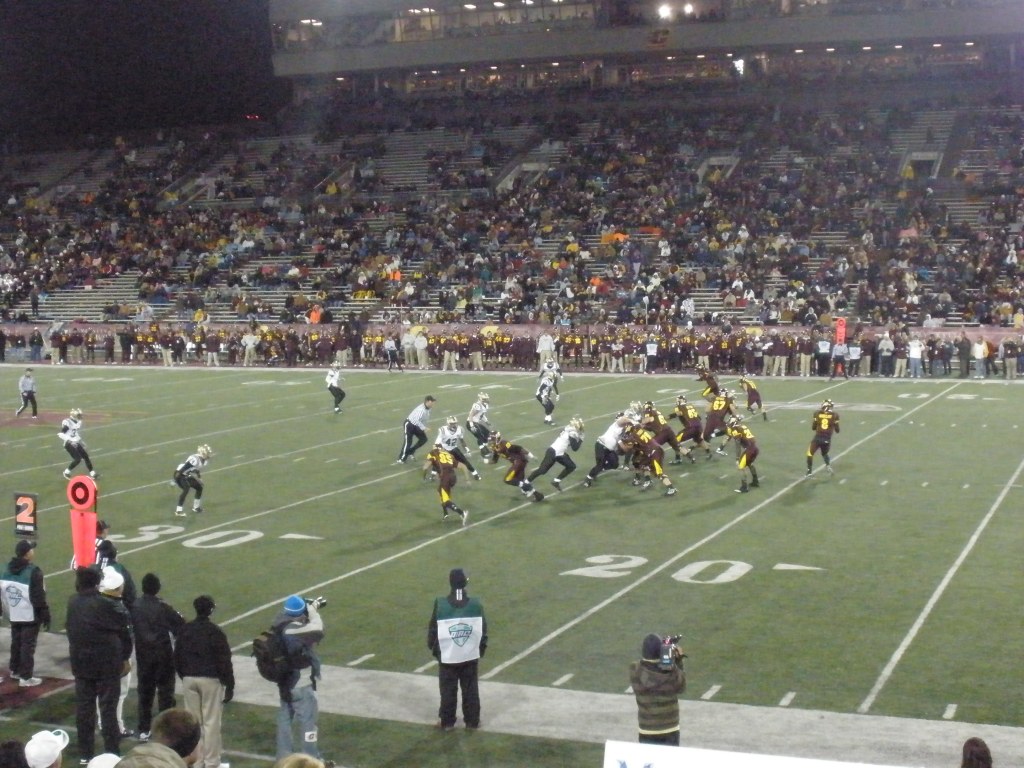
My favorite memory was when I went in 2016 for the night game at a packed Kelly/ Shorts Stadium. Western Michigan was 4-0 coming into the game and Central Michigan was 3-1. It was expected to be a close game between rivals with good records. Instead of a close game, Western Michigan crushed Central Michigan 49 to 10 on their home field. Some people say they like close competitive games, but I love to crush a rival. Just ask Ohio State how good it has felt to crush Michigan in 2018 and 2019 (they probably would have crushed Michigan again in 2020 if Michigan hadn’t cancelled the game because of COVID).
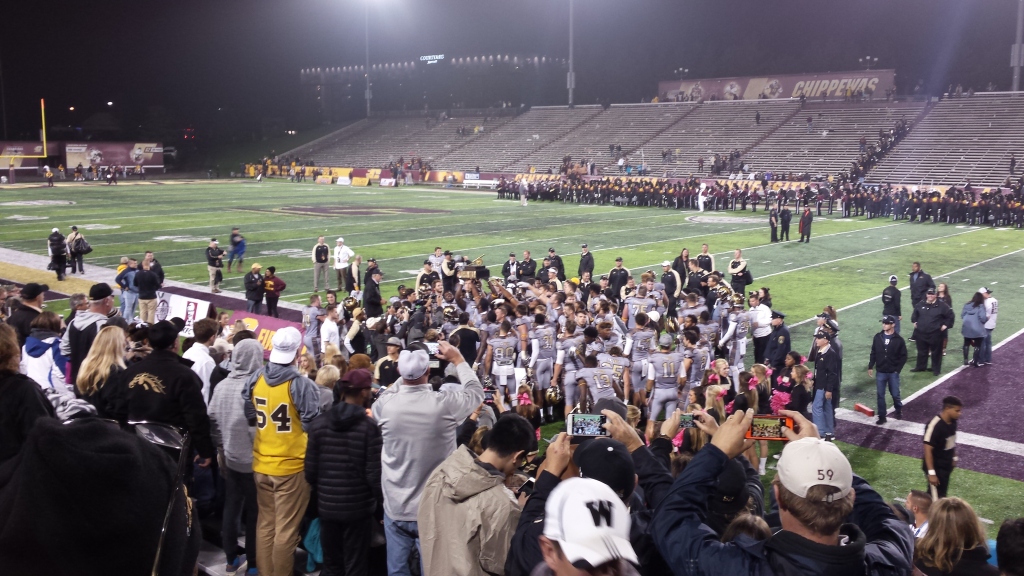
About an hour’s drive south of Mount Pleasant is Spartan Stadium in East Lansing, home to the Michigan State University Spartans. Opened in 1923 with a capacity of 14,000, Spartan Stadium has grown to a capacity of 75,000. Spartan Stadium is the sixth largest Stadium in the Big Ten Conference. Spartan Stadium has gone from a grass field in the 1920’s to artificial turf in 1970’s to grass 2001. It’s rare to see real grass today in college football and even for high schools across the country, as many schools have switched over the last 20 years or so. Spartan Stadium’s grass field is immaculate and in my opinion is one of the best in the country.

I have been to Spartan Stadium once to see my Broncos take on the Spartans. The pregame festivities included a military fly over of CH-47 Chinook, as September 11th was two days away. I had high hopes for an upset. It was 2017, following the Western Michigan Bronco’s 13-0, 2016 regular season followed by a trip to the Cotton Bowl. The week before the Broncos had a close game against University of Southern California in the Los Angeles Coliseum. Western Michigan played a decently competitive game against Michigan State, but ultimately lost 28 to 14. Not too bad considering in the past we had played various Big Ten teams and gotten crushed (Thanks for the $1 million Michigan State).
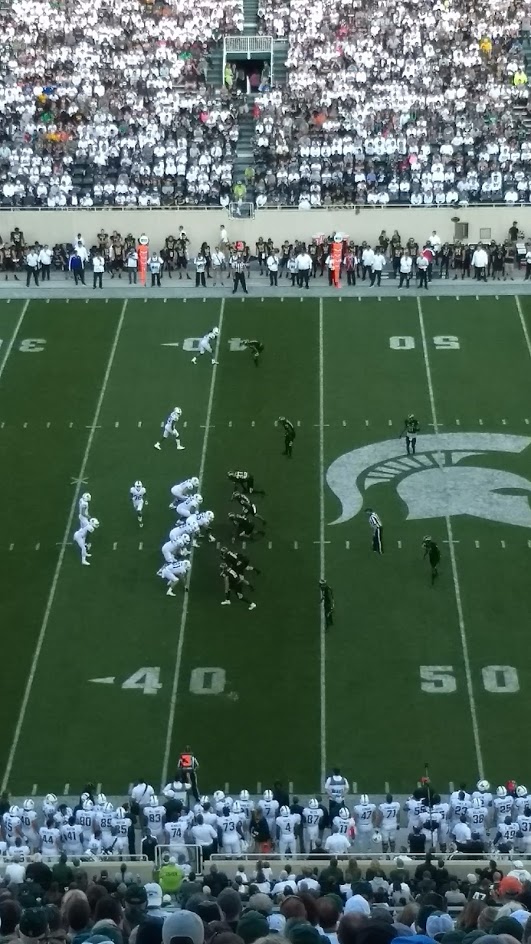
Now to the legendary “Big House” in Ann Arbor, home of the University of Michigan. Michigan Stadium was built in 1927 with an initial capacity of 72,000 people. Today after the addition of two aircraft carrier-like press box and suites, the current official capacity is 107,601. Michigan Stadium is the largest college football stadium in the country. It holds the record capacity of 115,109 on September 7, 2013, when they beat Notre Dame 41 to 30 under the lights. At Michigan Stadium, they pack them in tight- it’s all bleacher seating minus the suites. Your knees are leaning into the back of the person in front of you and you have someone else’s knees in your back. Interestingly, about 75% of the stadium is below ground level. Compare that to the University of Tennessee’s Stadium which holds about 100,000 people and is all above ground on the banks of the Tennessee River. Michigan Stadium has also hosted outdoor hockey games, and European exhibition soccer games.
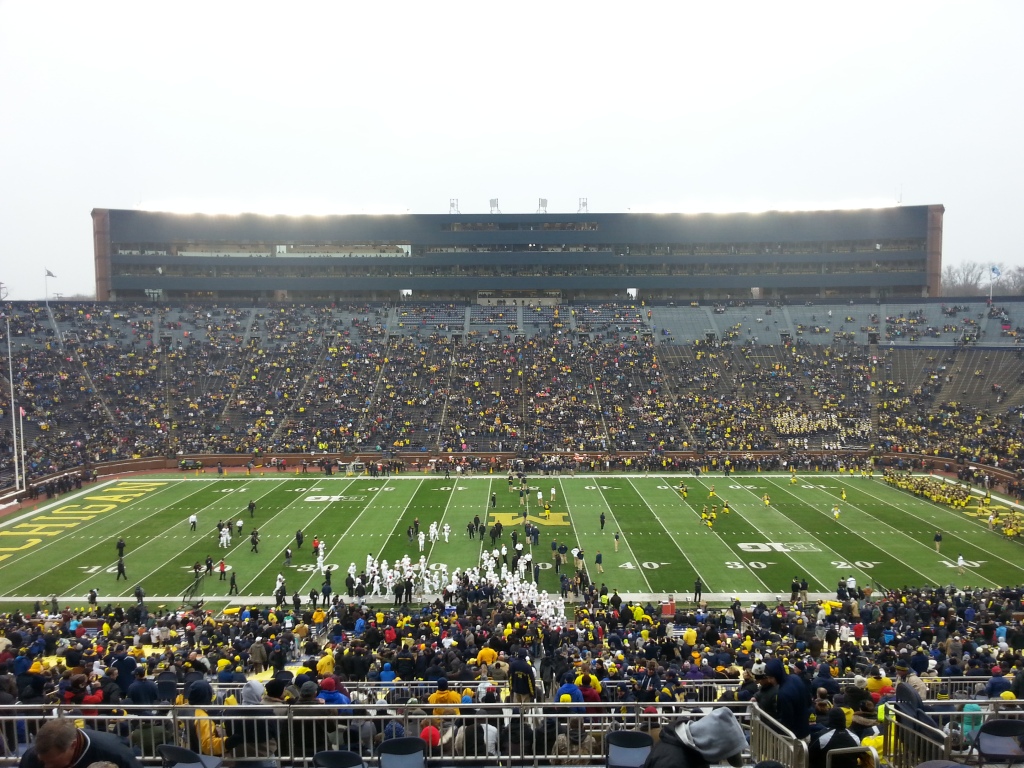
I saw my first college football game at the Big House. It was September 1, 2007, the first game of the season. Michigan was ranked number five in the preseason rankings and there were talks of National Championship aspirations. The team would consist of many future NFL players: Chad Henne, Mike Hart, Mario Manningham, Jake Long, and Brandon Graham, to name a few. It would also be coach Lloyd Carr’s last season coaching. Michigan would play FCS team Appalachian State (they switched to Division I in 2014). Appalachian State won the FCS national championship back-to-back in 2005 and 2006. Spoiler alert, they would win it again that year, 2007. Appalachian State was a quality opponent but practically no one saw the upset coming. Michigan scored first but would find themselves down 28 to 17 at halftime. This was the beginning of spread offenses in college football and Michigan wasn’t prepared for it. I remember Michigan lining up for a field goal in the last few seconds of the game, down by two to escape the upset. I was thinking to myself, “I feel bad for Appalachian State, they almost beat…” before I could finish that thought, I heard the thud of Appalachian State blocking the game-winning field goal. They picked up the blocked football and almost scored a touchdown on the block. Final score, Michigan 32, Appalachian State 34. Looking back at the stats, it’s baffling when compared to today’s college football offenses. Appalachian State threw for 227 yards and rushed for 160 yards. Not much compared to offenses of the last few years at schools like Oklahoma, Oregon, Ohio State and Alabama just to name a few. At the time, it felt like Michigan’s defense couldn’t stop any play Appalachian State ran. The following week again at home, Michigan would be in for a worse time as Chip Kelly would bring his up-tempo Oregon spread-offense to the Big House and rushed for over 300 yards. The Michigan-Appalachian State game would not only be one of the biggest upsets in college football history, but it was also historic because it was the first football game broadcast on the Big Ten Network, the Big Ten’s new cable network channel. Not a good start for the Big Ten conference.
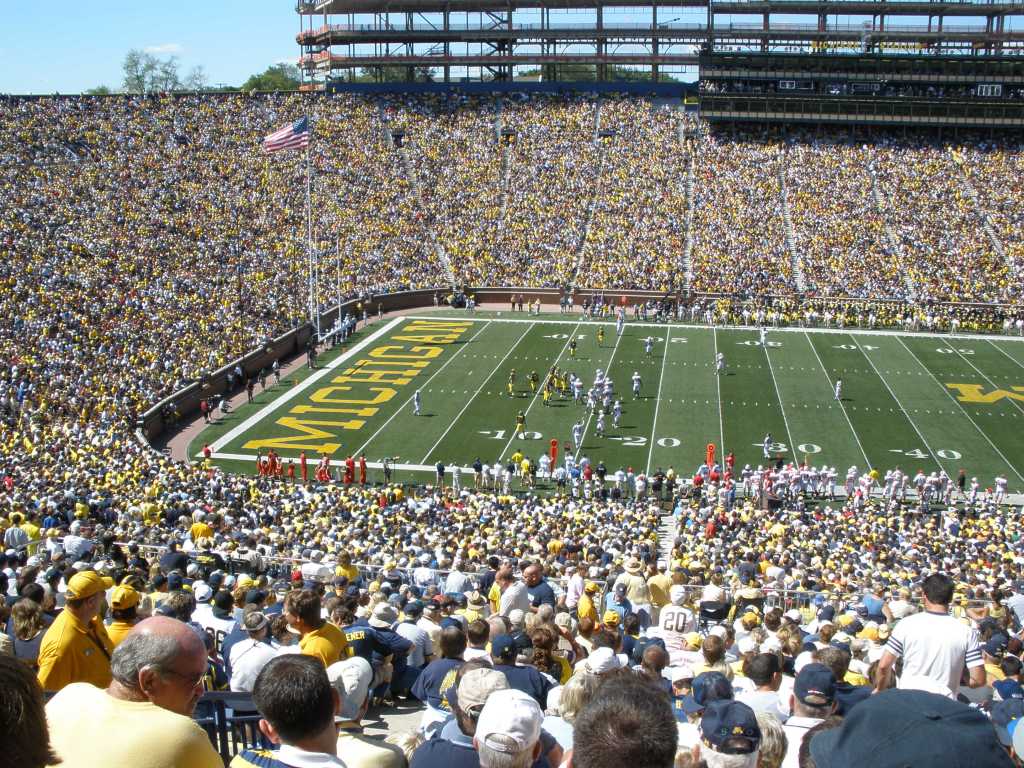
During another one of my visits to the Big House, I witnessed another historical moment. In 2009, I was there to see my Western Michigan Broncos take on Michigan. It was the first game of Rich Rodriguez’s second season at Michigan. The historic moment was Dennard Robinson’s first snap. I remember he took the snap out of the shotgun. He initially dropped the snap. After that the defense looked like it was moving in slow motion. At first it looked like he would be sacked but he picked up the ball and took off running and 43 yards later he was in the endzone. It looked like the defense froze, he was so fast.
Michigan Stadium has many historic moments, these are just the ones I witnessed. Take in football traditions at one of the five Michigan Division I college football stadiums.








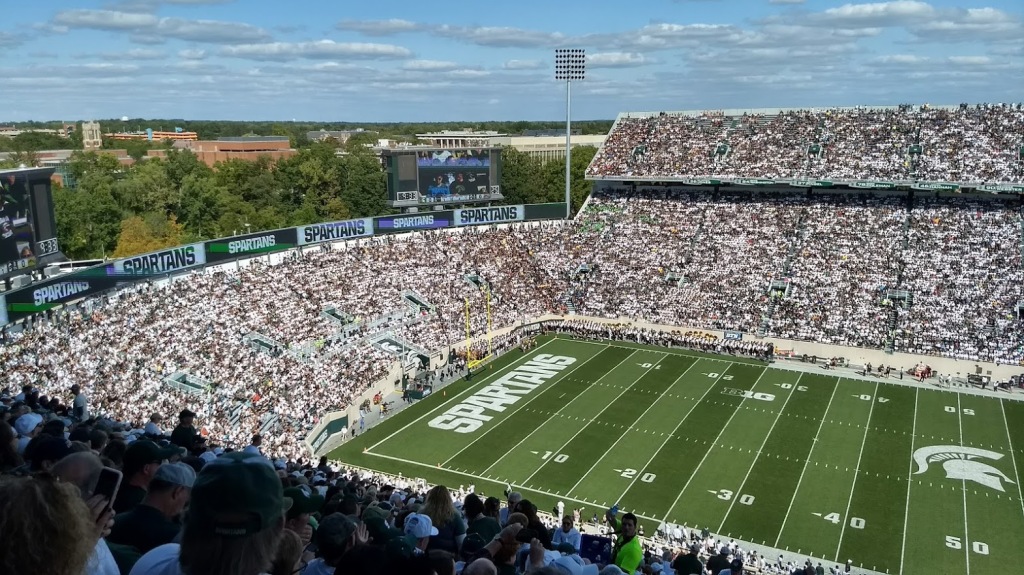




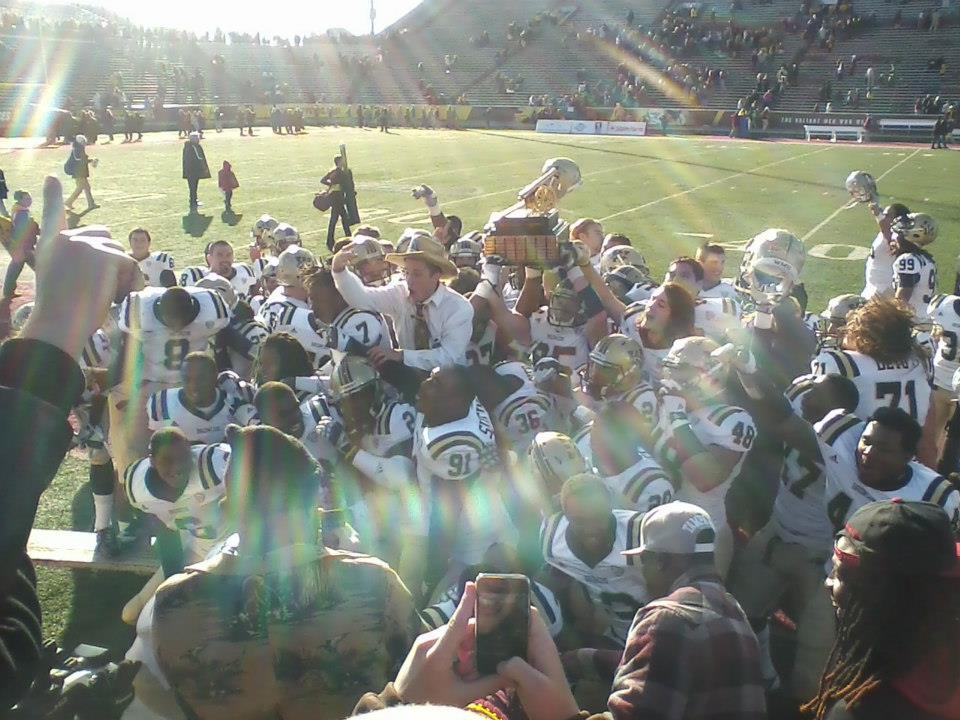



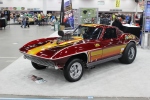


Leave a Reply